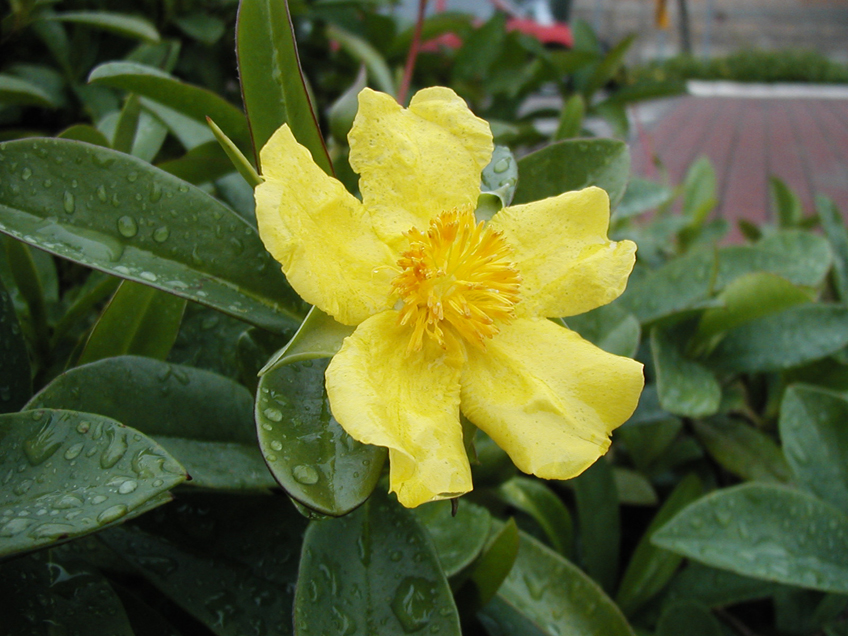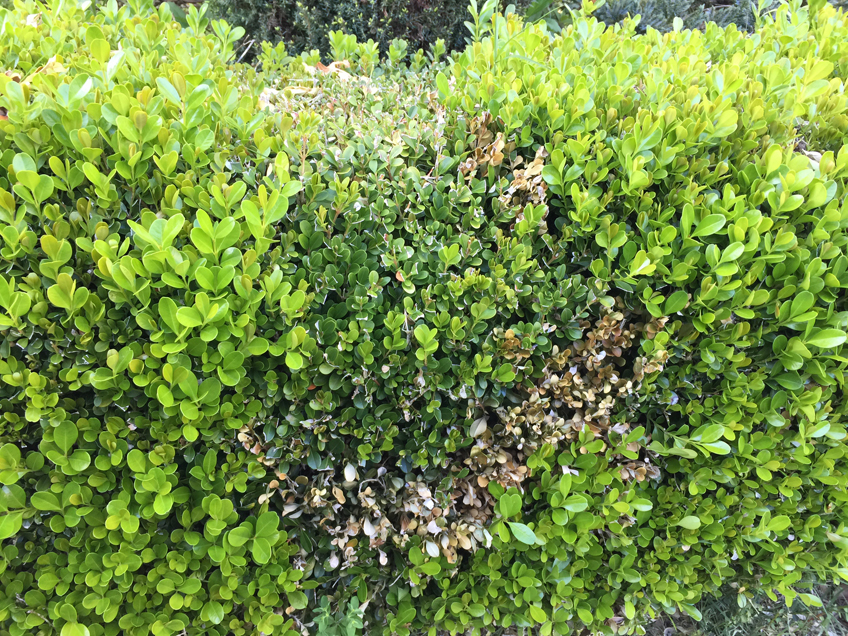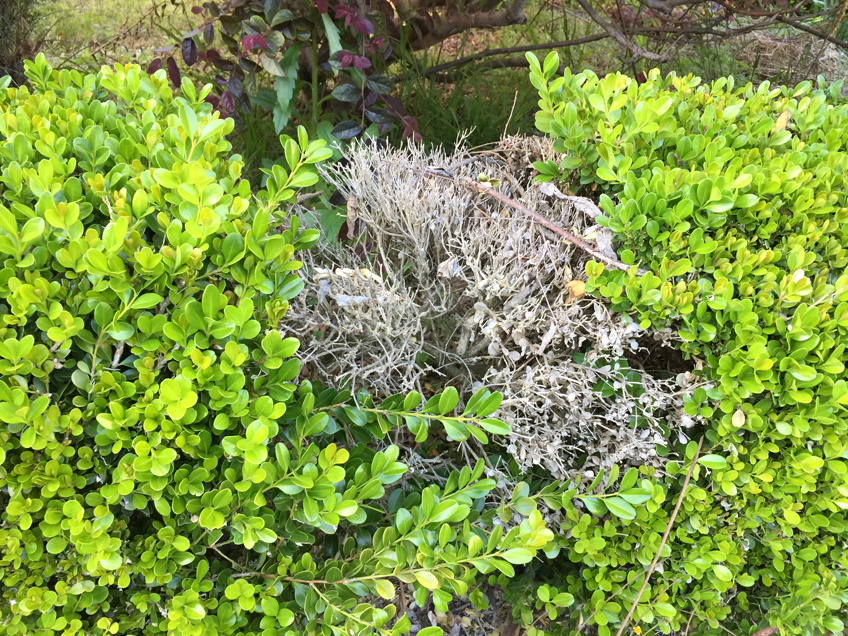Welcome to the Garden Clinic on what is the busiest weekend in spring.
I’m broadcasting live from Brisbane this weekend; the Garden Clinic is here for the BIGS, the Brisbane International Garden Show that is.
We would love to see all of our Queensland members at the show. So why not head down to Strathpine and check out the show.
In NSW this weekend spring is in full swing! Bilpin Flower Show is on, the Leura Garden Festival, Caringbah Orchid Show, and much more.
Its time to
Go west!
Get your party frock on and head up to the Bilpin Flower Show. My good friend Miranda Fair will be there to entertain and her frocks are always amazing.
If you love flowers you’ll love the Bilpin Flower Show.

Miranda's Bilpin Flower Show frocks never fail to impress. Photo - Geoff Jones
Bush Garden
Hibbertia scandens (Golden Guinea Flower or The Snake Vine)
A quick growing climber that is ideal as a groundcover, embankment grower, or climber on trellis or wire support extending to 5-6m in length and 3m in
height. Ideal around swimming pools.

Hibbertia scandens (Golden Guinea Flower or The Snake Vine)
Lush evergreen leaves act as a foil for the large open, single, five petalled golden-yellow flowers which appear year ‘round but mainly in spring and summer.
It is suitable for growing on coastal sands or any well drained soils. Even in a trough on a salty wind exposed deck or veranda for privacy. Whilst native
to coastal and open forest locations it is very hardy to a variety of garden and climatic situations.
Hibbertia prefers a sunny position but will grow actively in light shade. It is frost tender but resistant to salt laden winds.
Hibbertia responds to pruning after flowering by thickening the growth of stems and foliage.
Can occasionally play host to a caterpillar which produces a beautiful butterfly.
Bugwatch
Box Blight
History
In 1961 I noticed the buxus (box) hedge at the Ryde School of Horticulture was suffering from a dying back of leaves, especially after hedge pruning and
it was assumed it was caused by sunburn, excessive pruning or some other mechanical reason.
The yellowing and dying of the leaves continued for a time then strangely stopped and, after some fertiliser encouragement, regrowth occurred 'problem
solved', or that's what we thought.
Jump forward 52 years to 2013 to Salzburg and the gardens of the Sound of Music, Salzburg Castle and the same problem reappears only this time the Managing
Director of Salzburg Public Gardens, Wolfgang Saiko, explained to me how all the thousands of kilometres of buxus hedges and parterres across Europe
were all being attacked by a disease called Box Blight. Box Blight is caused by two different fungi, Cylindrocladium buxicola (syn. Calonectria pseudonaviculata)
and Pseudonectria buxi.

Early stages of Box Blight. Photo - Graham Ross
And there were few, if any, fungicide controls.
On return to Australia I communicated with a dozen estate Head Gardeners back in the U.K. and Europe about the disease and sought controls or remedies
to stop the disease spreading.
We have no fungicides registered for the problem in Australia but in time it is likely the registrations will change. I’ll come to those shortly.
Disease Appearence
The impact of the disease on buxus hedges is areas of dead and dying leaves with large patches of yellow or brown dead leaves and twigs. Spots and blotches
can appear on leaves and stems.
The disease is highly contagious and spread easily by hedging shears, pruners, and secateurs especially in wet weather.
Critically Pseudonectria buxi requires wounds for infection and is associated with clipping or pruning practices. Cylindrocladium buxicola can infect unwounded plants and causes more serious damage.
P. buxi has long been known, but little studied. C. buxicola was first recognised in the UK in the mid 1990s and has also broken out
in continental Europe, New Zealand and more recently in USA and Western Asia (Iran), but its origin is unknown.

The inevitable result. Photo - Graham Ross
Intergrated Plant Management Controls
Cultural
If your buxus hedges are trimmed by contract gardeners they must carefully clean their implements with a disinfectant every few metres. The same goes for
home gardeners. Methylated Spirit is suitable.
This year in England I was told repeatedly by experienced Head Gardeners not to trim buxus hedges when dormant, some strongly recommending they only be
trimmed when in active growth.
It was also recommended to keep them actively growing and healthy by applyingfertilisers and seaweed solutions every 2-3 months. That would be in Australia
from Spring through to mid - Autumn.
Organic feeds like Seamungus, or organically based Osmocote and Powerfeed or artificial controlled release fertilisers Acticote or Ferticote.
Chemical
Systemic fungicides, while available, are not registered in Australia to control Box Blight. In the UK the RHS notes that fungicides Bayer Fungus Fighter
(tebuconazole) and Bayer Fungus Fighter Plus (tebuconazole and trifloxystrobin) carry label recommendations for use against box blight. Triticonazole
(Scotts Fungus Clear Ultra and Scotts Fungus Clear Ultra Gun) is labelled for control of other diseases on ornamentals and could therefore be used
legally on box (at the owner's risk) to try and control box blight. Tebuconazole is effective against both genetic types of Cylindrocladium.In
Australia Raxil®, Folicur® contain the active ingredient. In 2013 the APVMA sought comments for registration changes in the use of tebuconazole.
Refer to the APVMA website (www.apvma.gov.au) to obtain a complete list of registered products.
The biology of the box blight disease.
The Royal Horticultural Society identifies that the fungal spores or mycelium structures can survive on fallen leaves for up to six years and become active
in warm, moist or rainy weather. Rain and watering helps spread the disease along with animals, lizards and birds. But “human activity, especially
on infected plants from nurseries” is the main cause of spread.